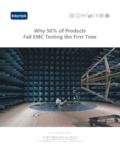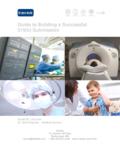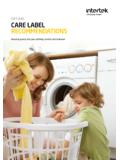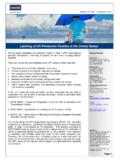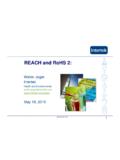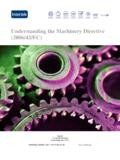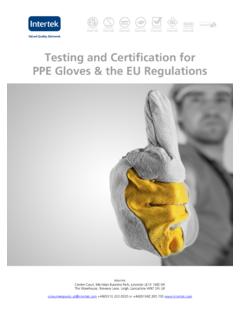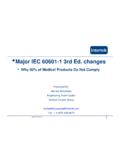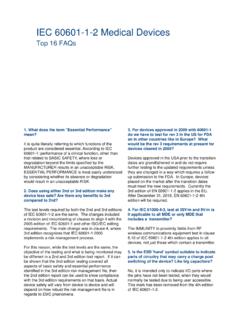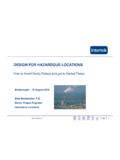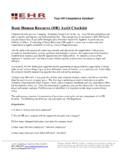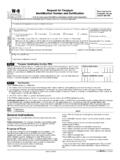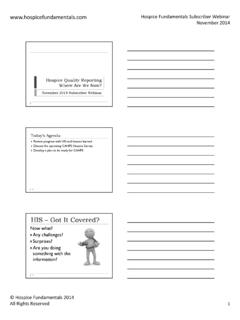Transcription of TCB User's Guide - Intertek
1 TCB User's Guide TABLE OF CONTENTS page WELCOME .. 2 Who can use the program? .. 2 Certification services offered .. 2 Can TCBs approve all devices? .. 3 RF exposure considerations .. 3 GETTING STARTED .. 4 Confidentiality .. 4 Certification agreement .. 5 TCB certification process .. 6 TEST REQUIREMENTS & ASSESSMENT .. 7 Application submittals - RF devices .. 7 Application submittals - Part 68 telephone devices .. 8 RESPONSE TO REQUESTED INFORMATION .. 9 CERTIFICATIONS .. 10 Prices and payment methods .. 10 Surveillance .. 10 ANNEX A - RF device certification exhibits.
2 11 ANNEX B - Part 68 terminal equipment certification exhibits .. 13 ANNEX C - Product label 15 ANNEX D - user information for RF devices .. 16version (c) 2015 page 1 of 16 Intertek Testing Services NA, Inc. 70 Codman Hill Road, Boxborough, MA 01719 USA Phone: Fax: E-mail: TCB User's Guide WELCOME Intertek Testing Services is a global testing and certification organization. We are pleased to offer our services for bringing your products to market quickly and economically. Intertek has been accredited as a TCB by the American Association for Laboratory Accreditation (A2LA) and has been designated by the NIST and the FCC as a TCB.
3 Please visit our web site at: Telecommunications Certification Bodies, or TCB s were first created on June 2, 2000, and were allowed to issue Grants of Equipment Authorization. Prior to June 2, 2000 only the FCC could certify radio equipment, and register terminal equipment. Over the years the lead-time at the FCC has varied from 4 to 10 weeks for radio equipment. WHO CAN USE THE TCB PROGRAM? Our services are available to manufacturers of equipment, and/or independent test laboratories who require certification or registration of their products prior to marketing them in the USA. These products may be ITE, RF devices or telephone devices.
4 TCB s cannot: - unnecessarily repeat tests; - grant a waiver of the rules; - grant a certification for which the FCC or ACTA rules do not exist or are unclear; - take enforcement actions; - grant a certification for a product already certified, except as a permissive change; - authorize a transfer of control of a grantee (except for Part 68). CERTIFICATION SERVICES OFFERED For RF devices, including FCC Parts 11, 15, 18, 22, 24, 25, 27, 74, 80, 87, 90, 95, 97 and 101: Grantee Code application (47 CFR ) Original Certification (47 CFR , ) Class II Permissive Change (47 CFR ) Change in identification of equipment (47 CFR ) For telephone terminal equipment within the scope of Part 68: Responsible Party Code application (ACTA Guidelines & Procedures, ) Original certification - for equipment not previously approved.
5 Modification filing - to report changes (but not model name changes) to approved equipment when the changes affect the electrical exhibits in the ACTA database of approved Part 68 products. Notice of change - to update the ACTA database for non-electrical, cosmetic or trade name changes, including model number or name changes. Re-certification - to create a new Responsible Party code for an existing file, in such cases as: adding a new manufacturer, creating a new product identification with permission of the original responsible party, or changing the product number from the old FCC Registration number format to the ACTA format.
6 Blanket modifications, which allow product or product family bearing more than one approval number to be changed with one filing, must be made directly with ACTA. Intertek can administer the filing process if you (c) 2015 page 2 of 16 Intertek Testing Services NA, Inc. 70 Codman Hill Road, Boxborough, MA 01719 USA Phone: Fax: E-mail: TCB User's Guide CAN TCBs APPROVE ALL DEVICES? TCB s can approve all telephone terminal equipment, all ITE, and most transmitters, including modules and those that require SAR/MPE (RF exposure, see below) testing between the frequencies of 300-3000 MHz.
7 The FCC has not released certification authority to TCBs for new technologies such as: Access BPL (Broadband over Power Line), learned-mode transmitters, UWB (Ultra Wide Band), SDR (Software-Defined Radio), implanted transmitters, Part 90 licensed transmitters operating in the 3650 MHz band, and U-NII radio at 5 GHz that employs DFS (Dynamic Frequency Selection). An up-to-date list of RF devices excluded from TCB certification is available from the FCC Knowledge DataBase (KDB) site at RF EXPOSURE CONSIDERATIONS All Part 15 unintentional radiators (ITE) are exempt from RF exposure considerations.
8 Most Part 15 portable transmitters are also exempt from RF exposure evaluation, but those allowed higher power under rule sections such as , and subparts D and E, may require it if output power is sufficiently high. For the purpose of evaluating RF exposure from radio transmitters, the FCC defines three equipment types and two user categories; which may occur in any combination: equipment type user category ( ) fixed, or facility ( ) General population/uncontrolled - situations in which the general public may be exposed. mobile - used > 20 cm from persons ( ) portable - used < 20 cm from persons ( ) Occupational/controlled - persons are exposed as a consequence of their employment, provided those persons are fully aware of the potential for exposure and can exercise control over their exposure TCBs may approve portable transmitters according to the transmitter operating frequency f (where f is in GHz) and worst-case user distance, as indicated below.
9 P is the higher output power of conducted or radiated (EIRP), taking into account any source-based time-averaging. At the present time TCBs may not certify portable transmitters operating below 300 MHz or above 3 GHz, where SAR (Specific Absorption Rate) evaluation would be required according to the table below. TCB authority Limit for general population Limit for occupational/controlled no SAR evaluation required to certify user distance < cm: P < 60/f mW user distance > cm: P < 120/f mW user distance < cm: P < 375/f mW user distance > cm: P < 900/f mW TCB must review SAR measurements P between limits above and below.
10 P between limits above and below. TCB cannot certify user distance < 20 cm: P > 375 mW user distance < 20 cm: P > 2250 mW TCBs may approve combinations of co-located portable transmitters. This may or may not involve SAR evaluation, according to FCC guidelines. The RF exposure limits for fixed and mobile transmitters are expressed in terms of MPE (Maximum Permissible Exposure, see ). TCBs can approve most fixed and mobile transmitters, but there are restrictions based on FCC Rule Part, operating frequency and power. Please contact us for details. version (c) 2015 page 3 of 16 Intertek Testing Services NA, Inc.
